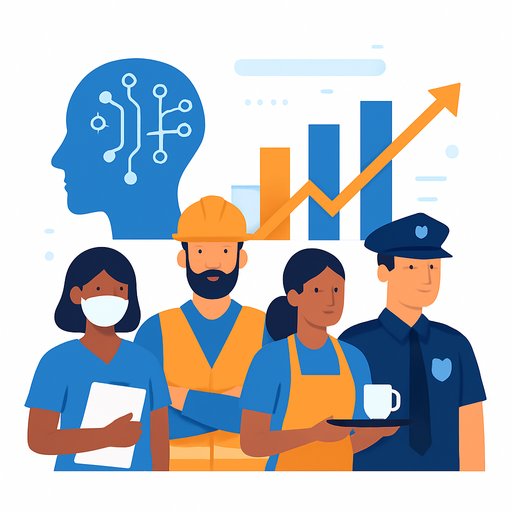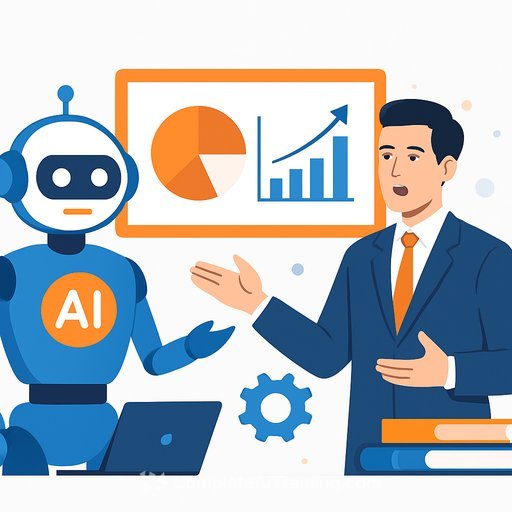Frontline Workers Are Back at Center Stage in the Age of AI
Despite all the noise about digital workers and AI agents replacing jobs, the momentum is shifting to the people closest to the work. Frontline teams are becoming the human layer that turns data into action. As organizations flatten and automation spreads, their judgment, speed, and context matter more than ever.
Two industrial events last week - from QAD | Redzone and IFS - spotlighted this shift. The takeaway for HR: the companies that win will pair AI agents with frontline talent, redesign roles for decision velocity, and invest in skills, safety, and culture.
Why HR Should Care: Decision Velocity Is the New Competitive Edge
Constellation Research's view is clear: there's a once-in-a-generation chance to blend autonomous digital labor with human experience and create a new category of frontline productivity. Success depends on context - AI that anticipates needs and fits the job in front of a worker right now.
Analyst Mike Ni put it bluntly: winners won't be the ones with more pilots. They'll be the ones with more recurring decisions automated and better outcomes. Organizations stuck in pilots will fall behind within five years. Decision velocity is the compounding advantage of turning data investments into governed decision services that continuously learn.
Translation for HR: frontline workers become the lead singers. AI and data are the band. Your job is to develop the people, policies, and workflows that let them perform together.
How Vendors Are Arming Frontline Teams
QAD | Redzone: AI Agents + Connected Work
QAD | Redzone is targeting mid-market manufacturers with a stack that blends ERP (QAD), connected workforce software (Redzone), and Champion AI - a set of agents that connect data and use cases. The promise: bring the right information to the right operator at the right moment.
Leadership emphasized a tight feedback loop between automation and the people running it. The goal is practical: give frontline workers the context to make better calls and let them "call the shots" inside automated workflows. There's a culture angle too - operators see targets, see losses, and are empowered to act.
IFS: "Physical AI" Meets Industrial Reality
At IFS Industrial X Unleashed, the company highlighted partnerships with Anthropic, Siemens, Boston Dynamics, and 1X Technologies to embed AI, digital workers, and robotics into everyday operations. The bet isn't on replacing people. It's on making industrial systems more autonomous while keeping humans in the loop.
IFS leadership pointed to aging infrastructure, labor shortages, and retiring expertise. AI can be embedded in real processes, built for real jobs - offline-capable, safe, and in context. The tough calls still land with frontline workers, now with an AI assist.
Jason McMullen of Noble Corp. underscored the point: rigs have rotating crews and scarce specialists. Workers may face issues they've never seen. AI that feeds relevant data in the moment - and signals when humans need to step in - is critical for safety and uptime.
UKG: Frontline Experience for Retail and Services
UKG is extending this trend beyond factories. The company outlined a Workforce Operating Platform powered by agentic AI to orchestrate schedules, staffing, and workflows. Its new Workforce Intelligence Hub promises end-to-end visibility across frontline operations, tying insights to hiring, demand, and dynamic labor management.
For workers, the value is straightforward: conversational access to schedules, punches, benefits, HR, and payroll. UKG is rolling out agentic applications through 2026, joining a broader push across Workday, Salesforce, and ServiceNow to improve frontline experience and retention. The message: AI won't replace the human touch - it should bring it forward.
What This Means for HR
- Redesign roles for decision velocity: Move routine approvals to governed decision services; elevate frontline work to judgment calls, safety, and quality.
- Make AI "in context": Tools must work offline, fit the task, and support safety. Avoid generic chatbots. Prioritize workflow-native agents.
- Double down on skills: Cross-train for new human-agent workflows, not just tool tips. Focus on data literacy, problem diagnosis, and escalation.
- Protect institutional knowledge: Capture expert processes, document variations, and let AI surface them in the moment of need.
- Update governance: Define which decisions can be automated, who approves changes, and how models are monitored for bias and drift.
- Prioritize safety: Human-in-the-loop by default for high-risk tasks. Clear stop rules. Audit trails for every AI-impacted decision.
90-Day HR Action Plan
- Map frontline decisions: Identify repeatable decisions by role, volume, risk, and data sources. Target 3-5 automations that improve safety or throughput.
- Stand up a cross-functional squad: HR, operations, safety, IT, and a frontline champion. Weekly cadence. Kill pilot sprawl.
- Pick workflow-native pilots: Examples - maintenance triage, quality checks, schedule optimization, or shift handovers with AI summaries.
- Define success metrics upfront: Decision cycle time, first-time fix rate, scrap/rework, near-misses, schedule adherence, and sentiment.
- Train for new roles: "Agent operator," "decision owner," and "exception resolver." Add microlearning at shift start with 5-7 minute refreshers.
- Close the loop: Capture operator feedback inside the tool. Reward teams for documenting edge cases and improvements.
Metrics That Matter
- Decision velocity: Time from data available to decision executed.
- Automation coverage: Percent of recurring frontline decisions governed by decision services.
- Quality and safety: Scrap/rework rates, incidents, and near-misses per hours worked.
- Uptime and throughput: Mean time to repair, first-time fix, and line availability.
- People outcomes: Retention, internal mobility, training completion, and on-shift engagement.
Avoid These Traps
- Pilot purgatory: Pilots with no path to scale. Tie each pilot to a decision service with owners, SLAs, and audit trails.
- Tool-first buying: Start with workflows and decisions, then pick vendors. Not the other way around.
- Shadow AI: Unvetted tools creeping onto the floor. Establish a safe, governed sandbox for experimentation.
- Training theater: One-off sessions don't change behavior. Shift-level reinforcement and job aids do.
Real-World Signals of ROI
Constellation Research's Supernova 2025 finalists - including Spacetel, Doctor Care Anywhere, and SavATree - show that engaging frontline workers with AI produces measurable results. The pattern is consistent: clarify decisions, embed agents in the flow of work, train people on exceptions, and keep humans in the loop for safety and customer impact.
Bottom Line for HR
Frontline workers are the force multiplier for AI. Give them context, clear decision rights, and tools that work where the work happens. Measure decision velocity, make safety non-negotiable, and scale what proves out fast.
If your team needs practical upskilling for human-agent workflows, explore curated programs by job role at Complete AI Training. For a broader catalog, see the latest additions here: Latest AI Courses.
Further reading
Your membership also unlocks:






